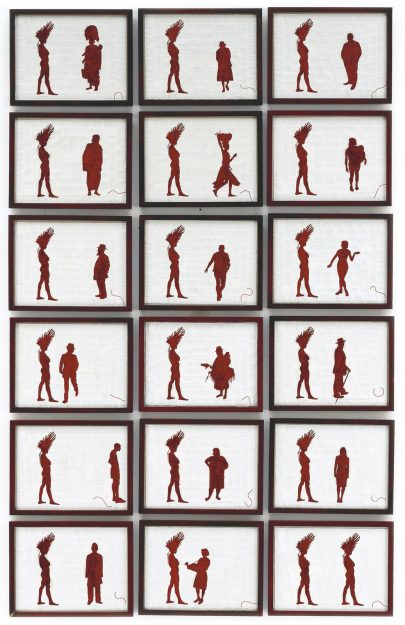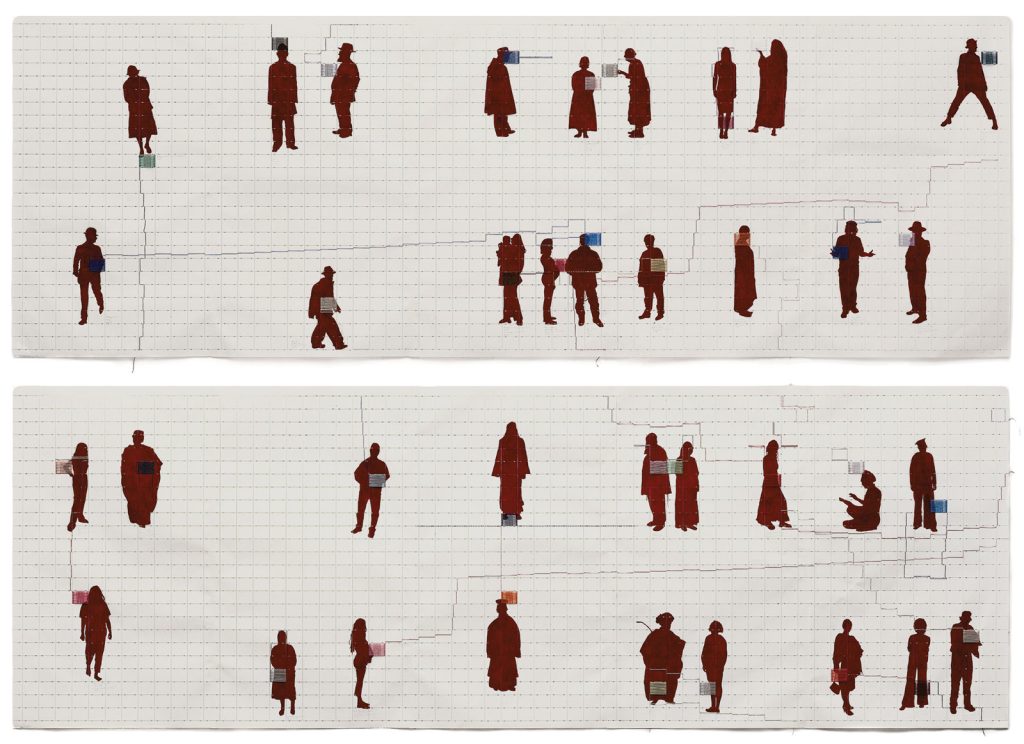Advice
A young friend once came to me seeking advice. He had been to India, where he met a guru who had become very important to him. Now my young friend wanted to bring his father to that crowded, hot city, halfway around the world, to meet the guru. I thought about it for a moment, and then said to him, “You know, I don’t think it’s a very good idea. That particular city in India is very unpleasant. The food will be foreign, he may well get sick, and there will be annoying bugs. Besides, I myself found the scene around the guru kind of strange, and your father might well be repulsed by it. He may then dismiss all spiritual endeavor, which would be a terrible outcome. My suggestion is, don’t do it.”
The young man completely ignored my advice and did indeed go off to India along with his father. When he returned a few months later, I immediately saw how very wrong I’d been in my counsel. His father just loved everything about India and felt right at home there. Not only did he admire the guru, he became his disciple. And not only that, he was determined to teach in the guru’s lineage, and was initiating a complete life change. My friend and his father were extremely happy. Having been proven so wrong in my advice, the question was, could I be happy for them?
Sometimes we feel a need to be proven right as we look at someone else’s life choices; it is not that they are necessarily doing anything wrong or hurtful, but they may be living in a different way than we have decided they should be living. Or perhaps our advice turns out to be unappreciated or incorrect, as mine was, and we come face to face with the fact that someone’s happiness does not revolve around us and our fabulous prescience and good sense; instead, it is based on their own good sense, or even on sheer good luck. Can we let go of our need to try to dominate people’s lives and our determination of what the correct outcome of their decisions should be?
Sitting with my young friend and hearing about the glorious experience of his father in India, I saw the cascade of emotions in my mind—embarrassment, skepticism, a touch of derision, and even a little resentment—and I knew I had a choice: sometimes kindness takes the form of stepping aside, letting go of our need to be right, and just being happy for someone.
Sometimes I intentionally ask myself the question, “What would I gain from this person’s loss?” and it is quite clear to me that I don’t benefit at all. The true benefit is in stepping off of center stage, and experiencing the kindness of delighting in someone else’s good experience.
Rules for Kindness
Once I was leading a meditation group in the D.C. area. The group had rented an elementary school auditorium for the day. All along the walls of the corridors were posted rules for being kind. During the breaks in the day, I would just stand and read them again and again. They seemed so simple, yet like many simple truths, if we were to live them rather than merely admire them, they could change our life. They rest on principles like dissolving the rigid boundaries we hold between ourselves and others, including rather than excluding, recognizing our actions (and words) are consequential, and being thoughtful.
Carderock Elementary School rules for being kind:
- Treat people the way you would like to be treated.
- Play fair.
- Respect everyone—other students and all staff.
- Everyone can play.
- Help others when they need help.
- Don’t hurt others on the inside or the outside.
- Honor all of the pillars of ethics.
I decided that weekend that every week I’d take one of these rules and hold it as a touchstone: to remember, to make choices by, to experiment with deepening, to enjoy. One of the most provocative and poignant rules was “Everyone can play.” When I first read that rule I imagined a child who was left out, staring at the in-crowd, feeling unwanted or unseen—then being beckoned forth, invited to join in, affirmed.
As I practiced this tenet, I seemed to notice more hints of loneliness in those I encountered than I had seen before, more subtle echoes of that forlorn child than I expected. When I began to include others, I watched as something unfurled within them and began to flower. In making a point of including others in conversation, I felt some subtle walls within me dissolve as well. There was a growing sense of rightness, of balance, because, after all, everyone should get to play.

Paying Attention
A friend once told me about repeated fights he and his wife would have early on in their marriage. Much of their conflict centered on how to have dinner. He liked to eat hurriedly, standing up in the kitchen, getting it over with as quickly as possible. She liked to set the table elegantly, sit down and eat leisurely, together. Many nights they fought instead of eating with each other. Finally they sought the help of a marriage counselor.
As they examined the layers of meaning hidden in the simple and familiar word “dinner,” they each discovered how much association, and how many people, they were actually bringing to that table. He talked about his father, a brutal man, often only home at dinnertime, which became a nightmarish experience he wanted to escape from as quickly as possible. She spoke of her fractured family, where her mentally ill brother consumed her mother with worry. It was mainly at dinner that an effort was made to talk to her, to find out about her day, where she felt she indeed belonged to a family. Dinner was rarely just dinner for either of my friends, and their partner was often not the person standing in front of them, but an “other” made of an amalgam of past hurts, long-held dreams, and tentative new yearnings.
Can we ever actually see another person? If we create an “other” out of our projections and associations and ready interpretations, we have made an object of a person—we have taken away their humanity. We have stripped from our consciousness their sensitivity to pain, their likely wish to feel at home in their bodies and minds, their complexity and intricacy and mutability. If we have lost any recognition of the truth of change in someone, and have fixed them in our mind as “good,” “bad,” or “indifferent,” we’ve lost touch with the living essence of that person. We are dwelling in a worldview of stylized prototypes and distant caricatures, reified images, and often very great loneliness.
Meditation practice is training in stepping back—in getting a broader perspective on what’s happening. Mindfulness, one of the tools at the core of meditation, helps us refrain from getting lost in habitual biases that distort what we’re seeing about our feelings. Without mindfulness, our perception is easily shaped by barely conscious decisions like “My stomach is roiling with what seems to be fear, but I could never allow myself to admit that. I’ll pretend it never came up.”
Mindfulness also helps us see through our prejudices about another person. For instance: “All older women are fuzzy thinkers, so she can’t possibly be as sharp as she is pretending to be.” Mindfulness works by showing us that conclusions like these are simply thoughts in our own mind. Mindfulness enables us to cultivate a different quality of attention, one where we relate to what we see before us not just as an echo of the past, or a foreshadowing of the future, but more as it is right now.
Making the effort to truly see someone doesn’t mean we never respond or react or take very strong action to try to settle the matter of dinner. We can and do attempt to restore a failing marriage, protest loud cell phones in public places, or try, with everything in us, to rectify injustice. But we can do it from a place that allows people to be as textured as they are, and that admits our feelings to be as varied and flowing as they are. A place open to surprises. A place that listens, that lets the world come alive.
One essential step in learning to more genuinely see each other is to bother to look. If someone yells at us, or annoys us, or dazzles us with a gift, we do pay attention to them. Our challenge then is to see them as they are, not as we project or assume them to be. But if they don’t make much of an impression on us, we have a different challenge; it is all too easy to look right through them.
In particular, the meditation exercise of offering lovingkindness to a neutral person confronts this tendency. We choose a person whom we don’t strongly like or dislike—we feel, indeed, rather neutral or indifferent toward them. Very often it helps to select a near stranger, or someone who plays a certain role or function in our lives—the grocery store checkout person, for example, or the UPS delivery person.
When we send a neutral person lovingkindness, we are consciously changing a pattern of overlooking them, or talking around them, to one of paying attention to them. We are experimenting with the notion of “loving thy neighbor as thyself ” when we don’t know the facts about their dependent elderly parent or at-risk teenager.
When we think of our neutral person, we haven’t learned the story of their suspicious mole or empty evenings. We have no knowledge of their inspiring triumphs or their admirable philanthropy. We aren’t seeing their tension after a disappointing job interview, or their sadness after their lover leaves. But we practice wishing them well anyway, simply because they exist, and because we do know the beauty, the sorrow, the poignancy, and the sheer, unalterable insecurity of existence, which we all share.
On trains, in the street, in our homes and communities, we practice paying attention—through developing mindfulness and lovingkindness and through letting go of projections—partly because a more complete attention proffers many special gifts. These gifts can penetrate through the exigencies of social roles, the seeming hollowness of chance encounters, and even through terrible hurt.
Paying attention provides the gift of noticing and the gift of connecting. It provides the gift of seeing a little bit of ourselves in others, and of realizing that we’re not so awfully alone. It allows us to let go of the burden of so much of what we habitually carry with us, and receive the gift of the present moment.
♦
This article has been excerpted from The Kindness Handbook by Sharon Salzberg and reprinted with permission of Sounds True, Inc.
Thank you for subscribing to Tricycle! As a nonprofit, we depend on readers like you to keep Buddhist teachings and practices widely available.
